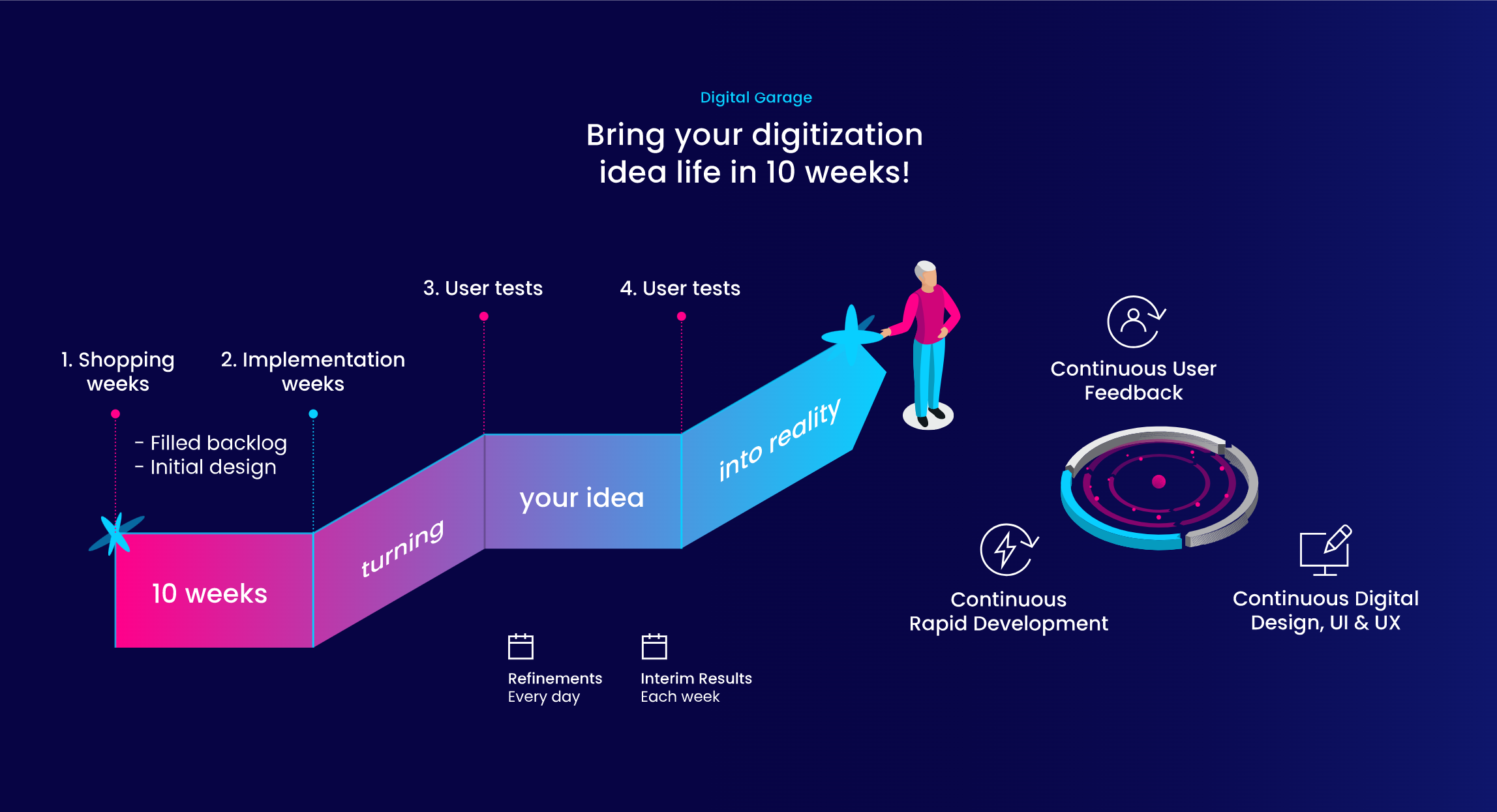Breaking new ground with new approaches
Meeting increased requirements
The need for software remains greater than the capacity to build it. Advancing digitization requires companies in all industries to support their internal processes with software. There is a growing need to transform companies completely digitally with software that can meet the increased demands for flexibility, sustainability and networking.

Good approaches are needed
Practical solutions
This does not always require software solutions to be developed from scratch. The first solution approach is often configurable standard software, but this does not offer enough flexibility to meet the individual needs of the company’s own clients or processes.
Approaches are needed that on the one hand standardize software development and also shorten development time. At the same time, however, these approaches need to ensure that software can be designed with sufficient flexibility to meet the company’s own requirements. Low Code and Rapid Application Development products (RAD) do exactly this.

We put ideas into practice
Use of low-code tools
Turning an idea into useful software requires more than just Low Code tools. An efficient and focused approach is needed to hone the idea, develop it quickly using Low Code, and validate the benefits with users. We call this approach the “Digital Garage”
In 10 weeks to a usable Minimum Viable Product
Digital Garage
In the Digital Garage, we start by determining the central use case of the client’s idea, create an initial design, and establish the technical prerequisites for implementation. After that, we continuously implement our clients’ idea with Low Code tools. It is important for us to validate the benefit of the idea at all times. For this reason, we build in user tests in the middle and at the end of a Digital Garage. Due to the speed gain afforded by Low Code tools, a Digital Garage typically takes ten weeks and ends up with a usable Minimal Viable Product.
Learn more


